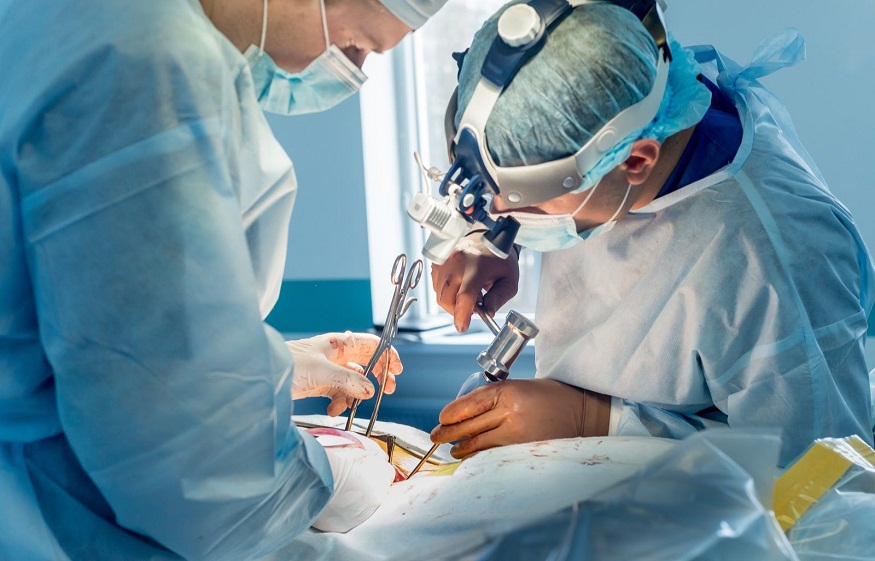In recent years, spinal fusion surgery has seen remarkable advancements, particularly with the rise of emerging technologies like 3D printing. Traditionally, spinal fusion surgery was performed using bone grafts and implants made from standard materials, requiring extensive preparation and recovery time. However, 3D printing technology has contributed to a significant shift, enhancing precision, with the potential to reduce complications and improve patient outcomes. Dr. Larry Davidson, a leading specialist on spinal surgery,notes that this technology helps offer custom-fit implants and detailed anatomical models, which can support improved surgeries and potentially faster recovery times.
Understanding Spinal Fusion Surgery
To understand the transformative impact of 3D printing in spinal fusion surgery, it’s crucial to first grasp the purpose and procedure of the surgery itself. Spinal fusion is a technique used to permanently connect two or more vertebrae, eliminating motion between them and providing stability. It is commonly performed to address conditions such as degenerative disc disease, scoliosis, spinal instability and fractures. Traditionally, surgeons use metal plates, screws, or rods alongside bone grafts to facilitate fusion, but these methods come with challenges. The standard “one-size-fits-all” implants may not perfectly match a patient’s unique anatomy, leading to issues like implant misalignment, prolonged recovery and sometimes the need for revision surgery. This is where 3D printing has revolutionized the field, offering a customized, precise solution that improves outcomes and minimizes complications.
The Emergence of 3D Printing in Medicine
Also known as additive manufacturing, 3D printing involves creating physical objects from digital models by layering materials such as plastic, metal, or biocompatible substances. In healthcare, this technology has been used in various applications, from producing prosthetics to creating replicas of human organs for preoperative planning. In spinal surgery, 3D printing enables the creation of highly customized implants and precise anatomical models tailored to each patient’s unique spinal structure. This customization can help reduce the risk of complications, potentially improve procedural success and support surgeons in visualizing complex spinal structures, making it easier to plan and execute more effective surgical interventions.
Customization of Implants: Tailoring Treatment to Patients
One of the greatest advantages of 3D printing in spinal surgery is its ability to customize implants for individual patients. Instead of relying on standard, off-the-shelf implants, surgeons can now design 3D-printed implants that precisely match the contours of the patient’s spine. This level of customization aims for a precise fit, which may help reduce risks of complications such as implant migration, loosening, or mechanical failure. Using advanced imaging technologies like CT scans or MRIs, a digital model of the patient’s spine is created to produce an implant that mimics the exact shape and size of the vertebrae, ensuring optimal alignment and integration with the surrounding bone. This precision leads to better surgical outcomes, faster recovery times and less postoperative pain for patients.
Surgical Planning with 3D-Printed Models
Another critical aspect of 3D printing in spinal fusion surgery is its transformative role in preoperative planning. Traditionally, surgeons relied on two-dimensional imaging techniques like X-rays, CT scans and MRIs, which, while effective, offer limited insight into the spine’s complex three-dimensional structure. In contrast, 3D-printed models provide a clearer and more detailed representation of the patient’s anatomy, enabling surgeons to visualize specific spinal deformities or areas requiring correction. These physical models give surgeons the opportunity to practice and refine their surgical approach before entering the operating room, experimenting with different techniques and identifying potential challenges in advance, leading to more precise surgeries and reducing the risk of errors. Additionally, 3D models enhance communication between the surgical team and the patient, allowing surgeons to explain the procedure in greater detail and helping patients understand the complexities of their surgery and what to expect during recovery. This transparency builds trust and empowers patients to make more informed decisions about their treatment.
Reducing Surgical Time and Complications
Incorporating 3D printing technology into spinal surgery has the potential to significantly reduce both surgical time and complications. Since 3D-printed implants are custom-designed to fit the patient’s anatomy precisely, surgeons can perform the procedure more efficiently without needing to adjust or manipulate the implant during surgery, reducing operating time and, consequently, lowering the risks of infection, anesthesia-related complications and excessive blood loss. Moreover, many 3D-printed implants are designed with porous structures that encourage faster bone growth and fusion, promoting better integration with the patient’s bone tissue, which speeds up healing and reduces the need for revision surgeries. These advancements not only improve patient outcomes but also reduce the overall cost of care by minimizing postoperative complications.
The Future of 3D Printing in Spinal Surgery
As 3D printing technology continues to evolve, its applications in spinal surgery will likely expand. One of the most exciting developments is the use of bioprinting, a subset of 3D printing that involves printing living tissues and cells. Bioprinting could potentially enable the creation of biological implants that mimic the properties of natural bone, providing even greater integration and reducing the need for synthetic materials.
Additionally, advancements in materials science are expected to lead to the development of even more biocompatible and durable 3D-printed implants. Future implants may be designed with embedded sensors that can monitor the healing process in real-time, providing valuable feedback to both surgeons and patients during the recovery period.
3D printing may also play a role in enhancing minimally invasive techniques, where smaller incisions and advanced tools are used to perform spinal fusion surgeries. As minimally invasive techniques become more common, the precision of 3D-printed implants will be crucial in achieving the desired outcomes while reducing the trauma associated with traditional open surgeries.
The role of 3D printing in spinal surgery has introduced significant advancements. By providing surgeons with custom-fit implants and detailed anatomical models, 3D printing continues to support greater precision and improved outcomes in spinal fusion surgeries. Patients can benefit from reduced surgical time, fewer complications and faster recovery, while surgeons gain access to cutting-edge tools that enhance their ability to plan and execute complex procedures.
As technology continues to advance, 3D printing will undoubtedly play an even greater role in shaping the future of spinal surgery, leading to safer, more effective treatments for patients worldwide. Dr. Larry Davidson remarks that developments like bioprinted implants and refined minimally invasive techniques represent potential advancements that may continue to shape the future of spinal surgery, offering promising new directions for enhancing patient care and surgical precision.



